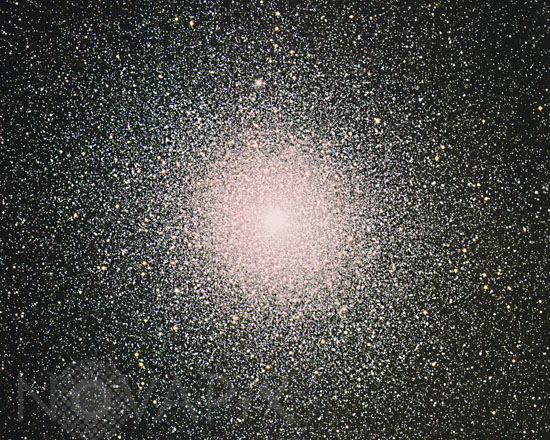Photo Agency - Astronomy - Space - Nature

The globular cluster 47 Tucanae, NGC 104
author: Anglo-Australian Observatory/David Malin Images/Novapix
reference: a-agb01-04008
Image Size 300 DPI: 51 * 40 cm
Among the many spectacular objects in the southern skies are two magnificent naked-eye globular clusters, omega Centauri and 47 Tucanae. These ancient cities of stars are captives of the Milky Way but were formed long before our Galaxy assumed its present shape, indeed these clusters have some of the oldest known stars. 47 Tuc is about 15,000 light years distant and contains several million stars, as many as some minor galaxies. The crowded central region leads to occasional stellar encounters and it is in 47 Tuc that rapidly-spinning pulsars have been discovered by radio astronomers. Though the light of globular clusters is dominated by so-called 'red' giant stars, their colour is no redder than a domestic tungsten lamp, so the true colour of 47 Tuc is close to the pale yellow.
Contact : Stéphane Aubin +33-(0)9-51-26-53-76
© Novapix - All rights reserved


